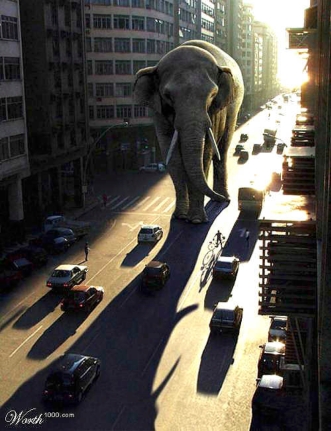When I was young – yes, that was indeed last century – I made a paper with two American scientists that I had never met. I one them I met years after, on the other side of the world (for me), in New Zealand. The guy is quite fascinating for a number of reasons, one of which being that he has wild ideas, the type that divides the world into those that will call him a genius and those that will loath him, ever after. That’s Josh Donlan. A few years back, he published a paper in Nature that created some waves in the normally well-behaving community of conservation biologists, about assisted colonization: rewilding North America.
The idea is that the Pleistocene is not so far away, in eco-evolutionary times, and that a few thousands years ago, the great mammalian megafauna was still roaming the plains where Clint Eastwood rode yesterday. So in terms of ecology, there are a bunch of key ecological processes that are not performed by these beasts anymore. Also, there exist large animals in the world now that could somehow replace their extinct ancestors: elephants, camels, lions, horses, giant tortoises… Wait, it gets even better: many of these species are currently endangered in their native areas, so translocating them into North America could also alleviate some of the threats they face in Africa and Asia, such as poaching. Just think about some critically endangered Equidae, like the Przewalski’s horse. Or like the wild Asian ass. I’d put you an image of this magnificent animal, but I seem to have problem with my browser; it behaves strangely.
Brilliant idea, but… There are a number of problems as well. Let’s put aside the fact that it is very costly, long and probably logistically nightmarish to obtain a large population of a large mammal from another continent. Remains two drawbacks as big as that mega-fauna. First, there are important conflicts with humans and some of these animals, in particular elephants and lions. Human-animal conflicts are so problematic that entire sessions are devoted to them in conservation meetings. Second, putting species where they don’t belong ecologically often leads to biological invasions, something that can be very nasty. Ask the Australians about the half-million feral horses and twice that many camels that roam in their backyard.
So on one hand, we have a superb solution to save some endangered species with a really bleak future, and in the meantime restore the ecological functioning of the great plains of late (while providing some amazing sights that will undoubtedly increase the ecotourism value of the Giant Sequoia National Park); and on the other one, we have a potentially evil danger of novel human-animal conflicts doubled with uncontrollable alien invasive species. A perfect debate menu for our Semibière meetings (see the previous post on that).
So, what about you, my friend. You’d be against, or for it?





















